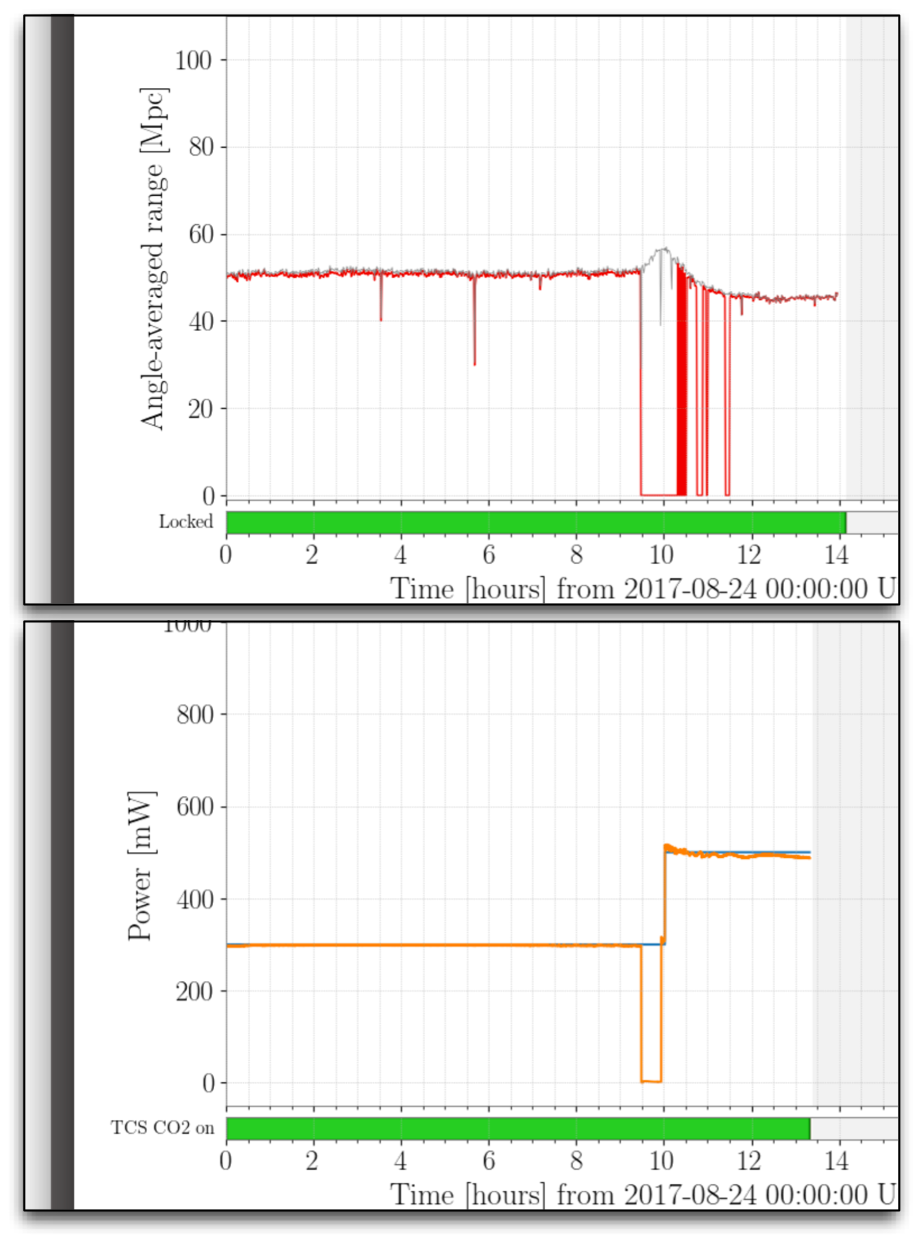TITLE: 08/24 Owl Shift: 07:00-15:00 UTC (00:00-08:00 PST), all times posted in UTC
STATE of H1: Observing at 46Mpc
INCOMING OPERATOR: Patrick (subbing for Cheryl)
SHIFT SUMMARY:
Shift mostly quiet until TCSX acted up. Aiden is making an aLog that includes the latest power adjustment made to recover the original range. I'm not feeling well this morning so Patrick has generously granted me early leave.
LOG:








































